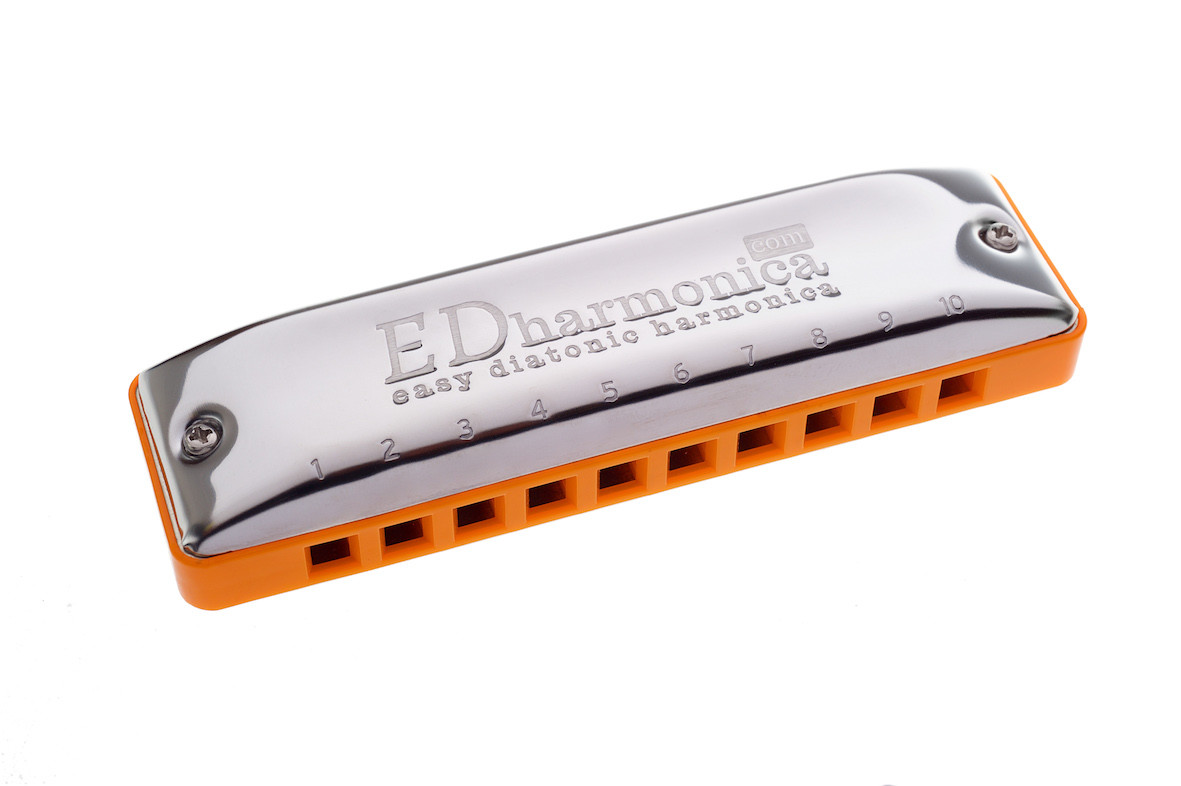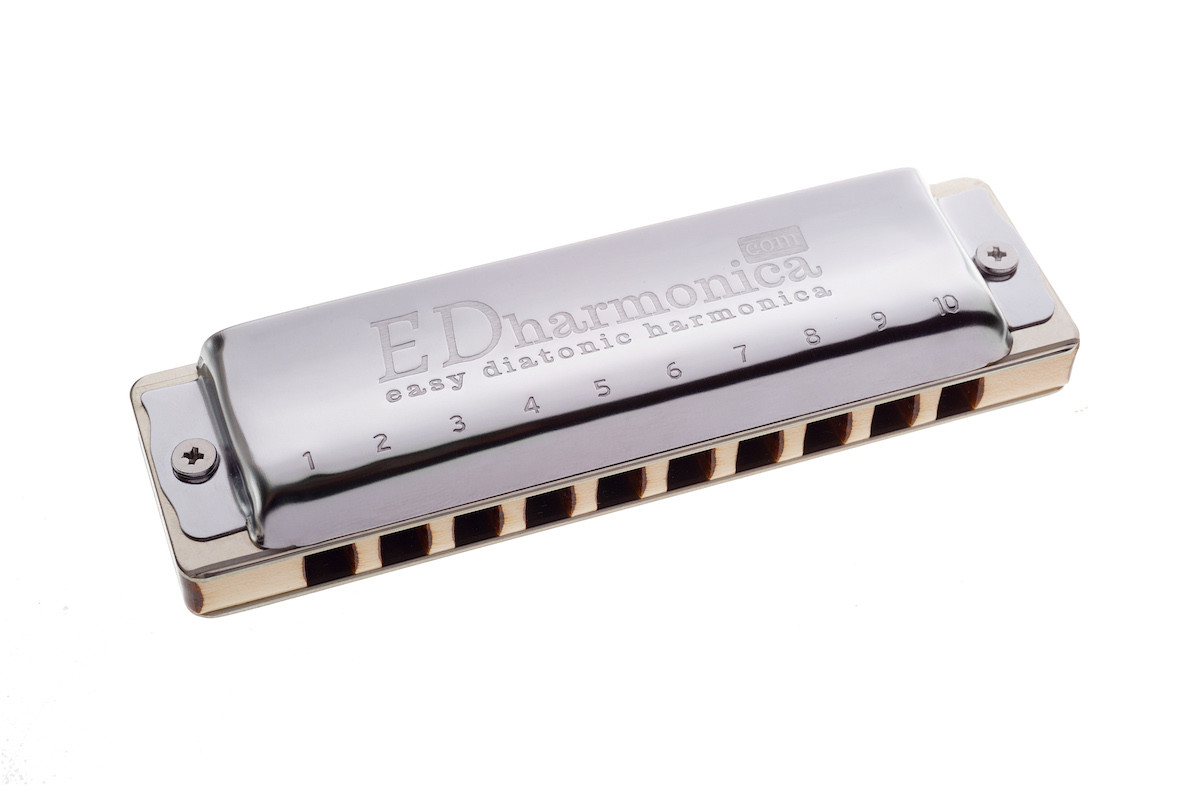BEFORE
What was it like before the Easy Diatonic Harmonica?
The Diatonic harmonica (often referred to as the blues harp) was created by a Bohemian instrument maker, Joseph Richter, in 1826, almost 200 years ago, and it was initially designed for playing European folk music.
The world has changed since then, a huge number of music genres have emerged, but the harmonica’s tuning system has remained the same.
Over time, this lack of change in the tuning has gradually turned the diatonic harmonica into one of the hardest musical instruments in the world to master.
NOW
What has changed with the arrival of the Easy Diatonic Harmonica?
The Easy Diatonic Harmonica is the harmonica of the 21st century, designed in accordance with the laws of music and offering musical possibilities to match the spirit of the age.
It’s been created specially for an easier and more convenient playing experience in all modern music genres.
The Easy Diatonic Harmonica enables beginners to achieve quick results and offers extraordinary possibilities to advanced harmonica players.
BEFORE
To play all the notes on a standard diatonic harmonica you had to master as many as four additional complex techniques:
Most harmonica players had to practice regularly for years to properly master these techniques and to learn to use them freely.
NOW
With the Easy Diatonic Harmonica, you will only need two additional techniques:
And the note layout is thought-out in great detail, with notes arranged according to the frequency of their use:
the most frequently used notes do not require any special skills
notes that are used less often are played with the additional draw bend technique
and only the most infrequent notes require overblowing
BEFORE
Standard diatonic harmonica note layout. Key of C
NOW
Easy Diatonic Harmonica note layout. Key of C (Am)
BEFORE
Note layout varied a lot in each of the three octaves on the harmonica which made the entire system too complicated.
Even many competent harmonica players could not remember the layouts of different harmonicas, only that of a C harmonica at best.
NOW
On the Easy Diatonic Harmonica, notes are repeated in each octave, as is the case with all popular modern musical instruments.
To learn the entire note layout of your Easy Diatonic Harmonica you only have to remember the pattern on the first three holes.
BEFORE
For beginner players the musical possibilities of a diatonic harmonica were very limited.
Even when playing apparently simple tunes you often found that some of the notes you needed were annoyingly missing and could only be played by using bends.
As a result, beginners had to content themselves with the simplest tunes involving no bends, like Twinkle Twinkle Little Star and Oh Susanna, while improvisation for beginners was more or less impossible without the bending skills.
NOW
With the arrival of the Easy Diatonic Harmonica, a huge number of well-known songs can be played easily.
For example, you can now play Ed Sheeran's Shape of You, Eric Clapton's Wonderful Tonight, Coldplay's Yellow, Bon Jovi's It's My Life, U2's With or Without You, the Eagles' Hotel California and many other popular songs without a single bend.
What is more, you can even start learning to improvise and play together with other musicians without having the bending skills. The Easy Diatonic Harmonica makes all this realistic!
And at the same time, you will be able to master your bends properly and at your own pace, gradually unlocking the instrument’s incredible potential.
IT IS NOW EASY TO PLAY A HUGE NUMBER OF POPULAR SONGS - AND WITH NO BENDS!
Deep Purple - Soldier of fortune
Stevie Wonder - Isn't she lovely
Summertime - Jazz standard
Rihanna - Stay
Sia - Cheap Thrills
With the Easy Diatonic Harmonica it is easy to play in as many as 8 different keys without any overblows, let alone overdraws
CLICK HERE TO LEARN MORE ABOUT OVERBLOWS AND OVERDRAWS
To play the diatonic harmonica to the full in different keys you needed notes which could be played only with the help of overblowing and overdrawing.
You not only had to spend a lot of time learning those techniques but also quite a bit of money to have the harmonica customized so that it was possible to play them at all. That’s all changed now with the arrival of the Easy Diatonic Harmonica. Each Easy Diatonic Harmonica lets you play in as many as 8 different keys without overblowing, let alone overdrawing.
MORE POSSIBILITIES WITH THE BLUES
BLUES IN THE KEY OF E ON A C HARMONICA? EASY!
You no longer have to have another Easy Diatonic Harmonica to play in the "bluesiest" key of E. It is now very easy and straightforward to play blues in E on an Easy Diatonic Harmonica in the key of C (Am). This is now one of the easiest and most convenient blues positions on the Easy Diatonic Harmonica.
IT IS NOW INCREDIBLY CONVENIENT TO PLAY BLUES IN G
Like to play in the so-called 2nd position? Then imagine having the G note always on the draw side and being able to bend literally on every hole. Great, isn't it?
But the truly amazing part is that all "legal" blues notes (notes of the blues scale + the major pentatonic) are laid out in the most convenient way possible: blow - full draw bend - draw, and that is the pattern repeated on every hole! Anyone who likes to play fast will certainly appreciate this.
BLUES IN A. TONGUE BLOCKING ROCKS
The possibility to play tongue blocked octaves for every single note on an Easy Diatonic Harmonica takes tongue blocking blues playing to new heights and the sound sometimes acquires a color pretty much like that of a Hammond organ.
BLUES IN B. ALMOST LIKE THE THIRD POSITION ON A DIATONIC HARMONICA
Unlike a standard diatonic harmonica, the Easy Diatonic Harmonica makes it very convenient to play blues in the so-called 6th position (key of B). The patterns are very similar to those used for playing blues in the so-called 3rd position on a standard diatonic harmonica. Advanced players will particularly appreciate the ease with which blues can be played in the 6th position.
PLAYING SOLO
The Easy Diatonic Harmonica has the characteristics of a perfect solo instrument: 1) availability of both major (on the draw) and minor (on the blow) chords, 2) the possibility of playing tongue blocked octaves on all holes, 3) the possibility to play double stops (two notes played together) and other interesting intervals.
If you enjoy inventing exciting solo rhythms, like to play chugging, folk and popular music, or reggae, or maybe even use some beatboxing in your harmonica playing, and if you prefer doing all that without an accompaniment, then the Easy Diatonic Harmonica is perfect for you! It is a modern instrument offering huge possibilities for solo performers.

